Round brilliant cut diamonds have captured the hearts of people worldwide, making them a popular choice for engagement rings. In fact, they account for nearly 75% of all diamond sales. But what makes these diamonds so highly coveted? Are there any intriguing historical facts associated with this cut? And how much should you expect to invest in a round brilliant cut diamond? In this article, we will explore the allure of round brilliant cut diamonds, their rich history, and the challenges early diamond manufacturers faced in perfecting this cut. Stay tuned to uncover everything you need to know about round brilliant cut diamonds and their timeless brilliance.
DESIGN YOUR OWN ENGAGEMENT RING: START WITH A SETTING OR START WITH A DIAMOND. IT’S REALLY UP TO YOU!
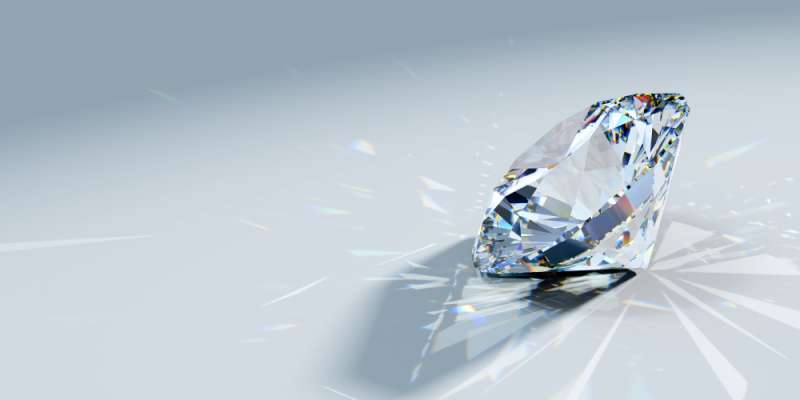
History Of Round Brilliant Cut Diamonds
Since the early days, there has been a quest to improve diamond cutting techniques. The craftsmanship of cutting directly affects the beauty, sparkle, and light reflection of a diamond. In the 18th century, diamond experts began their remarkable journey and created the first blueprints for what would eventually become the magnificent round brilliant cut diamond.
However, the tools available at that time were insufficient to do justice to this extraordinary cut. Round brilliant-cut diamonds from the 18th century cannot compare to the diamonds manufactured today using state-of-the-art machinery. The full potential of the round brilliant cut’s brilliance and sparkle had to wait for a breakthrough in diamond cutting methods, which took nearly two centuries to occur.
In the late 20th century, the introduction of diamond-cutting saws revolutionized the process. With improved working conditions and advanced tools, diamond cutters could finally unleash the true splendor of the round brilliant cut. Marcel Tolkowski, renowned for his book “Diamond Design” published in 1919, defined the ideal proportions for a round brilliant cut stone, forever changing the history of this cut.
By discarding outdated tools and embracing precise lasers, the perfection of the round brilliant cut could be fully revealed. The progress in shaping round brilliant cut diamonds has been remarkable. With a rich history of breakthroughs and innovative ideas, the round brilliant cut has become one of the most beautiful and globally recognized diamond cuts.
Now, let’s take a break from this historical lesson and delve into the fascinating details of the actual cut itself.

What Is A Round Brilliant Cut Diamond?
Round cut diamonds, often referred to as round brilliant diamonds, have consistently held the position of the most popular diamond shape. They account for approximately two-thirds of all diamond sales worldwide. The allure of round brilliant-cut diamonds lies in their exceptional sparkle and the symbolism of their brilliant shape.
However, achieving the round brilliant cut is a challenging task. It involves creating 58 facets, including the optional culet, that maximize the reflection of white light, known as brilliance. Of these facets, 33 are located on the crown, consisting of eight star facets, eight kite facets, and 16 upper girdle facets. The remaining 25 facets can be found on the pavilion, comprising 16 lower girdle facets and eight main pavilion facets. Cutting a diamond into a round brilliant shape requires precision, as any mistake can have significant consequences.
One of the challenges of cutting round brilliant diamonds is the substantial amount of material that needs to be removed compared to other diamond shapes. This results in a considerable loss of the original stone, making the round brilliant cut a demanding endeavor.
Proportions play a crucial role in the round brilliant cut. The angles of the crown and pavilion, as well as the size and placement of the facets, are essential factors. Incorrect proportions, such as a stone that is too shallow or too deep, can cause light leakage instead of creating sparkle. The facets of a diamond act as mirrors, reflecting and bouncing light. If any of these facets are distorted or misaligned, the light will be redirected elsewhere.
For round brilliant diamonds, the ideal proportions are determined by the table percentage (55 to 59%), depth percentage (60.1 to 62.6%), a thin to slightly thick girdle, no culet, and a length-to-width ratio of 1-1.01. The length-to-width ratio is crucial for achieving the desired round shape, with a ratio as close to 1.00 as possible. Deviating significantly from this ratio can result in a diamond that appears less round and lacks brilliance.
It is important not to settle for a round brilliant stone that falls outside of the specified range, as it may compromise the intended round shape and brilliance that make this cut so desirable.
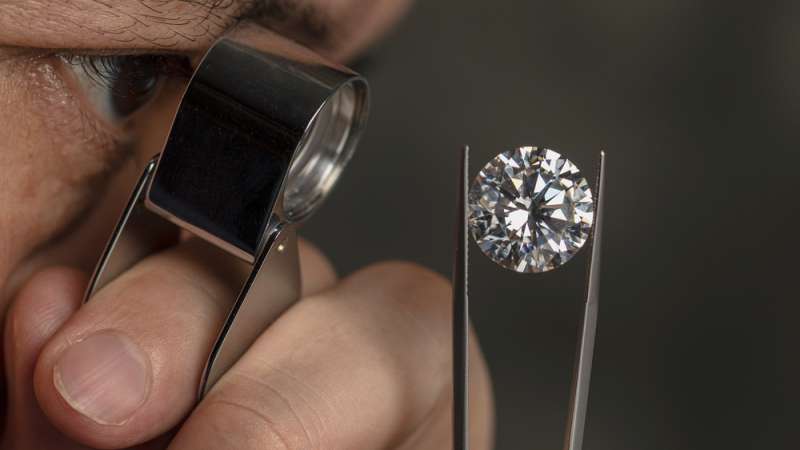
4 C’s Of The Round Brilliant Cut Diamonds
To determine the quality and value of a diamond, it is important to consider its 4 C’s. Let’s take a closer look at each of these factors.
The Cut of the Round Brilliant Cut Diamond:
The cut of a diamond is widely regarded as the most crucial aspect in determining its value, and rightfully so. A well-cut diamond will showcase exceptional light performance. This is particularly important for round brilliant-cut diamonds, as they are specifically optimized for brilliance, leaving little room for error. Every facet of the round brilliant cut is carefully calculated and designed to maximize white light reflection. Any deviation from the precise cut can significantly impact the diamond’s brilliance.
The Color of the Round Brilliant Cut Diamond:
When it comes to diamonds, many people prefer a “white” or colorless gemstone. Understanding the color grading scale is essential in this regard. The scale ranges from D (colorless) to Z (increasing warmth in color). Ultimately, the choice of diamond color should depend on the wearer’s personal taste and preferences. The differences in color grades for round cut diamonds are often subtle and hardly noticeable, especially to the naked eye. Therefore, compromising on color within a certain range can allow for better value in other areas. For example, choosing a round diamond with a G color rating can offer a white-looking stone without the premium price tag associated with D, E, or F grades.
The Clarity of the Round Brilliant Cut Diamond:
Clarity refers to the presence of inclusions or imperfections within a diamond. All natural diamonds have some level of imperfections, but the key question is how visible they are. For round brilliant cut diamonds, there is no one-size-fits-all clarity grade. However, a general guideline is to consider a clarity grade of VS2 or SI1 for diamonds weighing less than one carat. As the carat weight increases beyond one carat, it is advisable to opt for higher clarity grades such as VS1 or VS2. For diamonds larger than two carats, aiming for clarity grades of VVS2 to FL is recommended if it fits within your budget.
The Carat Weight of the Round Brilliant Cut Diamond:
Diamonds are measured in carats, with one carat equivalent to 0.2 grams or 200 milligrams. Determining the “ideal” carat weight for a round brilliant cut diamond can be subjective and dependent on factors such as the cutting process, which often results in the loss of initial weight, and individual budget constraints. Therefore, it is challenging to provide a definitive answer to the ideal carat weight.
In conclusion, when evaluating round brilliant cut diamonds, considering the cut, color, clarity, and carat weight will help determine the overall quality and value of the diamond. Each of these factors contributes to the unique beauty and desirability of the stone.
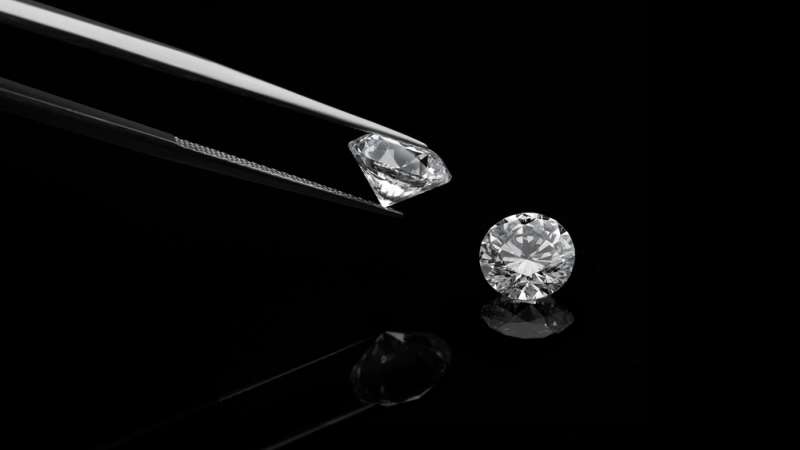
Price: How Much For A Round Brilliant Cut Diamond?
As mentioned earlier, the value and price of diamonds, including round brilliant cut diamonds, are determined by examining the 4 C’s. Factors such as carat weight, transparency, color grade, and cut quality play a significant role in determining the worth of a diamond.
Regarding the cost of round cut diamonds, it can vary widely. Generally, round cut diamonds tend to be more expensive due to several reasons. First, a substantial portion of the rough stone is lost during the cutting process to achieve the precise round shape. Additionally, the high demand and popularity of round cut diamonds contribute to their higher prices. The classic appeal and exceptional brilliance of round cut diamonds also warrant a premium.
For a rough estimate, the prices of one-carat round cut diamonds can range from $4,000 to $10,000, depending on factors such as clarity, color grades, and cut quality. It’s important to note that the specific setting of the diamond can also influence its overall cost, which brings us to the next point of consideration.
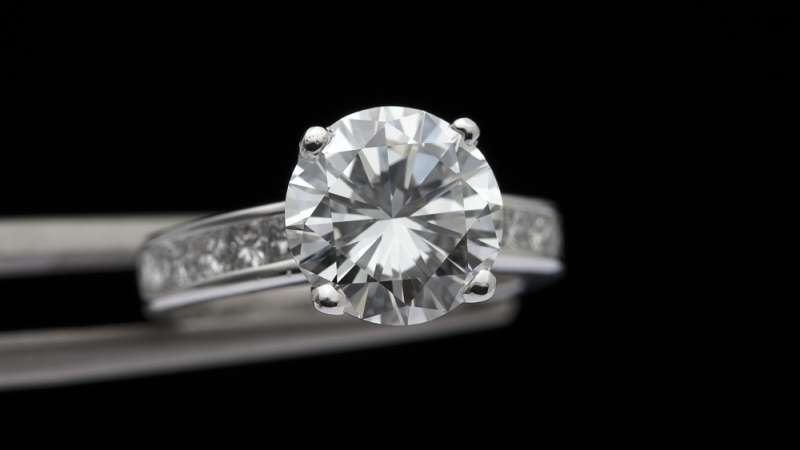
The Best Setting For A Round Brilliant Cut Diamond
When it comes to choosing a setting for round brilliant cut diamonds, individual preferences play a significant role. Some people prefer seeing these diamonds set in rings, while others prefer necklaces or other jewelry pieces.
Among all the jewelry options, round brilliant cut diamonds are most commonly set in rings, particularly in engagement rings, which account for approximately 75% of global diamond sales.
The beauty and sparkle of round brilliant cut diamonds offer versatility when selecting the perfect setting. However, there are some general guidelines that diamond shoppers can follow. For smaller stones, a four-prong setting is often recommended as it allows for maximum visibility and light penetration. For larger stones, a six-prong setting provides additional security and stability.
On the other hand, it is generally advised to avoid bezel settings that completely encircle the diamond. This type of setting can obstruct some of the light and potentially diminish the brilliance of the stone.
However, it’s important to note that while bezel settings may not be ideal for diamonds with higher cut and color grades, they can be suitable for diamonds with good to fair grades. Ultimately, the choice of setting should complement the characteristics of the diamond and align with personal preferences.
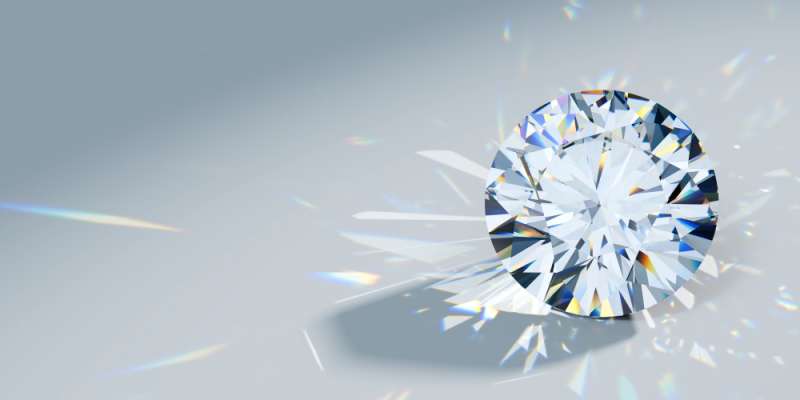
In Conclusion
As we near the conclusion of this discussion, let’s recap the key aspects of round brilliant cut diamonds:
- The ideal proportions of this cut were defined by Marcel Tolkowski in his renowned book “Diamond Design” published in 1919.
- Round brilliant cut diamonds are the most popular cut worldwide, representing two-thirds of all diamond sales.
- This cut is distinguished by a total of 58 facets, which contribute to its remarkable shine and sparkle.
- The price range for one-carat round brilliant cut diamonds on average is between $4,000 and $10,000.
- Four-prong and six-prong settings are typically recommended as the best settings for round brilliant cut diamonds.
While it may come with a higher price tag, the round brilliant cut is undeniably breathtaking. If you are currently in the process of diamond shopping, considering the round brilliant cut is certainly worthwhile.


